North Carolina is a vibrant tapestry of natural beauty and cultural richness, making it an ideal destination for a memorable vacation. From the majestic Blue Ridge and Great Smoky Mountains to the serene Atlantic coastline, the state offers a diverse range of landscapes for every kind of traveler.
Whether you’re seeking thrilling outdoor adventures, relaxing beach getaways, or immersive cultural experiences, North Carolina has it all. The state’s small towns are particularly enchanting, offering a glimpse into the heart and soul of the region.
These charming communities, nestled amidst stunning natural backdrops, are treasure troves of traditional Southern hospitality, rich history, and local craftsmanship.
In these hidden gems, you can experience the true essence of North Carolina, away from the hustle and bustle of city life.
Best Small Towns in North Carolina
Seagrove
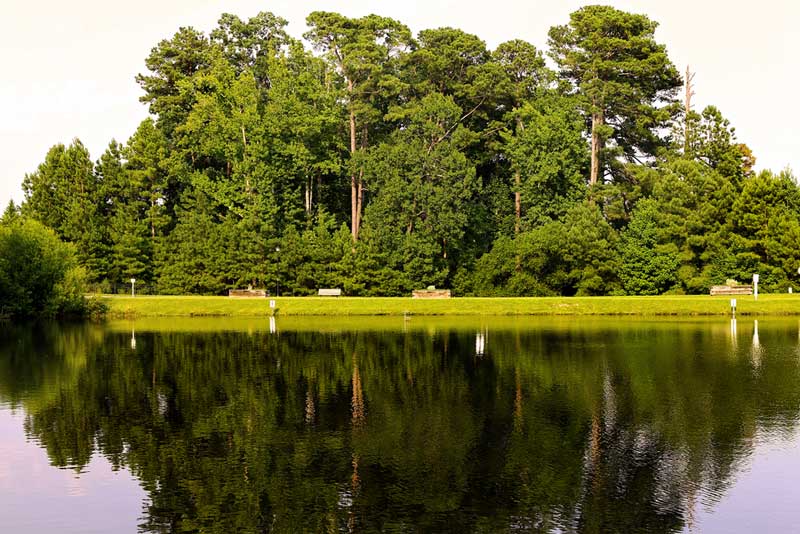
Seagrove, North Carolina
Seagrove, North Carolina, is a small town with a grand reputation as the handmade pottery capital of the United States. Its pottery tradition, rooted in the rich clay beds of the area, dates back over centuries.
Initially, the Native American Catawba tribe and later European settlers utilized the local resources for pottery, making Seagrove a natural choice for ceramicists. The town’s pottery history evolved through various phases, with families like the Cravens and the Coles being among the first European potters in the 1700s.
The 20th century saw a significant transformation with the establishment of Jugtown Pottery by Jacques and Juliana Busbee, revitalizing the local pottery scene. Today, Seagrove is a vibrant community of over 85 potters, known for its collaborative spirit and respect for the craft’s history.
The town’s location in central North Carolina, rich in natural clay, makes it an ideal place for pottery, attracting enthusiasts and collectors from all over.
Blowing Rock
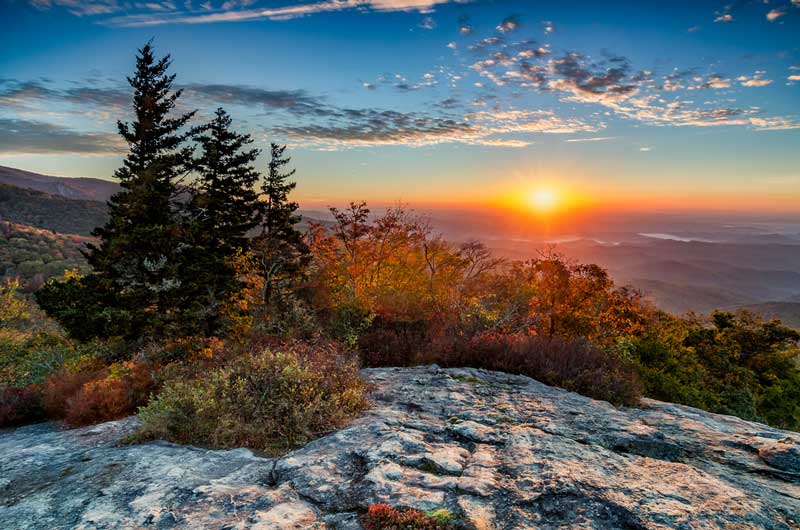
Blue Ridge Mountains, North Carolina
Nestled in the Blue Ridge Mountains of North Carolina, Blowing Rock is a picturesque town that has been charming visitors for over 150 years. Known as the “Crown of the Blue Ridge,” this quaint mountain town, home to just over 1,000 residents, has a rich history that began with Scotch-Irish settlers in the mid-1700s.
It’s a place where history and modernity blend seamlessly, offering a unique experience for visitors. The town’s name and one of its main attractions, The Blowing Rock, comes from a unique geological formation known for its spectacular views and the legend of a Cherokee brave.
Blowing Rock’s elevation provides a cooler climate, making it an ideal destination year-round, with comfortable summers and snowy winters. The town is a hub for outdoor activities like skiing at the nearby Appalachian Ski Mountain, exploring the Blue Ridge Parkway, and enjoying the serene beauty of Moses H. Cone Memorial Park.
Its historic downtown is a delight, filled with charming shops, delicious eateries, and cozy inns. Whether you’re looking for adventure, relaxation, or a bit of both, Blowing Rock is a gem in the High Country of North Carolina
Bryson City
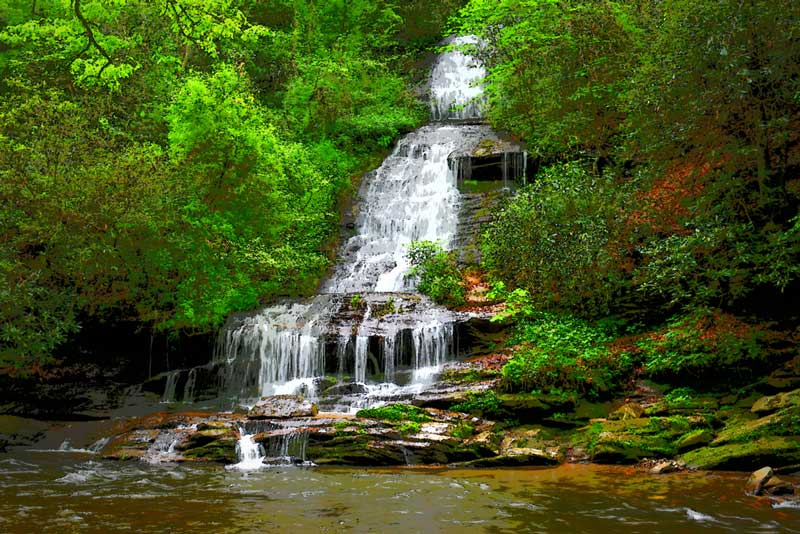
Bryson City
Bryson City, nestled in Western North Carolina near the Smoky Mountains, is a quaint mountain town that beckons with its natural beauty and charming ambiance. It’s a haven for outdoor enthusiasts, offering world-class whitewater rafting, scenic train rides, and access to breathtaking waterfalls.
The town’s history is deeply rooted in Native American culture, with its origins dating back thousands of years. The Road to Nowhere, a poignant reminder of the town’s past, leads to a tunnel surrounded by the history of displaced communities.
Downtown Bryson City is a delight to explore, featuring walkable streets lined with unique shops, excellent restaurants, and significant historic buildings such as the Smoky Mountains Railroad Depot and Bryson City Presbyterian Church.
For those seeking a tranquil retreat, the Folkestone Inn offers a charming farm getaway, complete with home-cooked breakfasts. Mingus Mill, a historic grist mill in the nearby Great Smoky Mountains National Park, provides a fascinating glimpse into 19th-century life.
Adventure seekers will find thrill in whitewater rafting on the Nantahala River, while those seeking relaxation can indulge in a cabana soak at Lakeview at Fontana, a beautifully renovated mid-century lodge.
Edenton
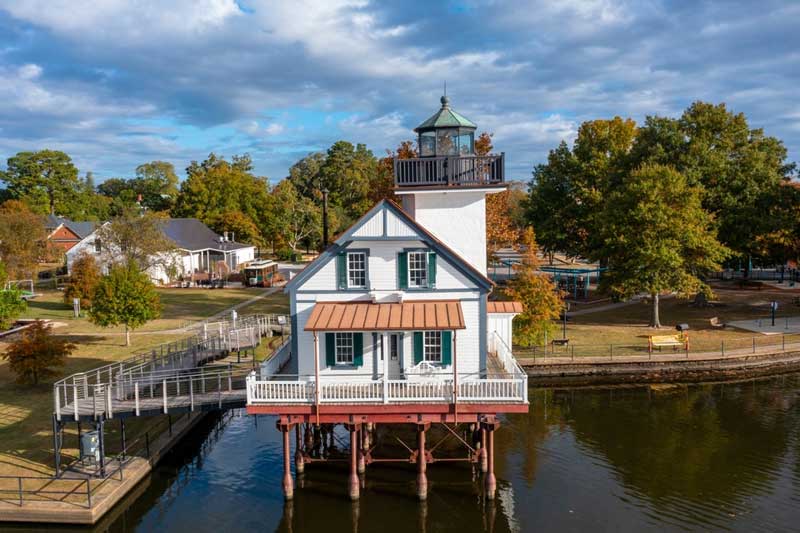
Edenton, North Carolina
Edenton, North Carolina, is a town steeped in history and beauty, often hailed as one of the South’s prettiest small towns. With its roots going back to 1722, Edenton stands as the state’s third-oldest town and the first provincial capital of North Carolina.
This charming town, with a population of around 5,000, is a treasure trove of colonial wealth and architecture. It has played a pivotal role in various historical moments, including the Revolutionary and Civil Wars.
The town is famous for the Edenton Tea Party of 1774, a significant political demonstration led by women. It’s also the birthplace of notable figures like Joseph Hewes, a signer of the Declaration of Independence, and Harriet Jacobs, an African-American author and abolitionist.
Today, Edenton’s extensive historic district showcases architectural styles spanning 250 years, including landmarks like the 1767 Chowan County Courthouse. Visitors can indulge in the local charm with various shops, restaurants, and outdoor activities, all set against a backdrop of stunning waterfront views and historic homes.
Washington (a.k.a. “Little Washington”)
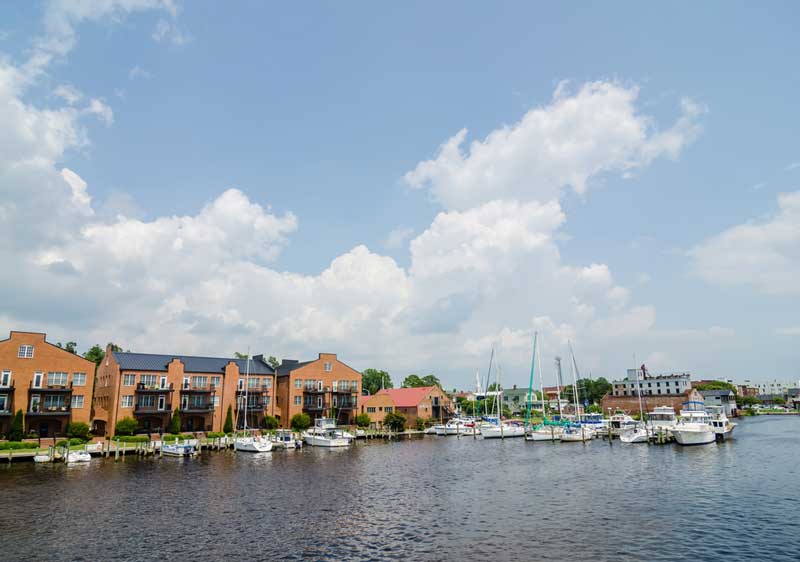
Washington, North Carolina
Washington, North Carolina, affectionately known as “Little Washington,” is a town with a rich history and a vibrant present. Established in 1776, it holds the distinction of being the first town in America named after George Washington.
Located at the junction of the Tar and Pamlico rivers, it serves as the gateway to the Pamlico-Albemarle sounds, the East Coast’s second-largest estuary. This setting provides the town with a picturesque backdrop and a strong maritime heritage.
Washington has rebuilt and preserved much of its historic charm, with its Historic District showcasing revival, federal, Greek, and Victorian architecture from the late 1800s and early 1900s.
Today, Washington’s waterfront is a focal point of the town, offering beautiful views, boating opportunities, and spaces like Festival Park for events and outdoor activities. The town’s Estuarium provides insight into the region’s ecosystem, culture, and heritage.
For history enthusiasts, self-guided audio tours offer a deep dive into the town’s past, including its African American history and involvement in the Underground Railroad. Washington’s downtown area is bustling with activity, from the Turnage Theater, a former vaudeville and movie venue, to various galleries, shops, and restaurants.
Manteo
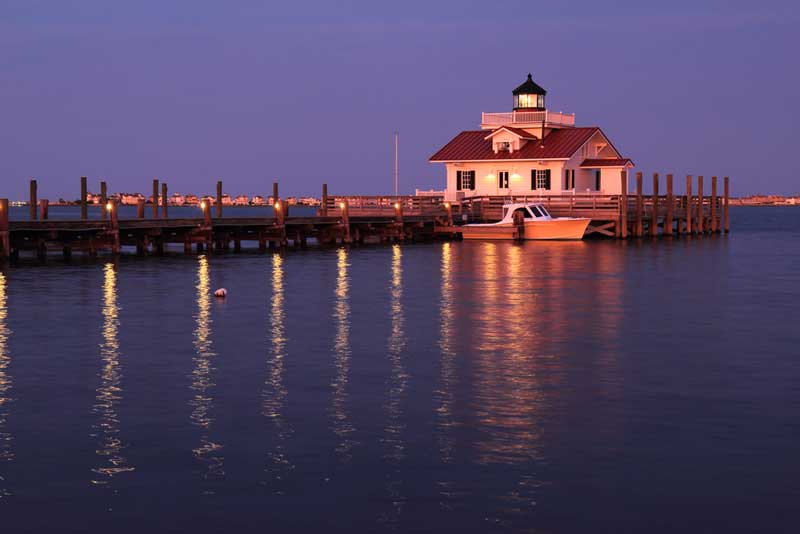
Manteo, Roanoke Island in North Carolina
Manteo, a quaint town located on Roanoke Island in North Carolina, is steeped in history and charm. It’s named after Manteo, a Native American chief of the Croatan tribe, highlighting its deep historical roots connected to the famous “Lost Colony” story.
This town offers a unique blend of historical significance and modern attractions. Visitors can explore Roanoke Island Festival Park, interact with costumed interpreters at the Elizabeth II ship, or learn about the early colonists and native Algonquian population.
The Roanoke Marshes Lighthouse and the North Carolina Maritime Museum are also key attractions.
Manteo’s culinary scene is not to be missed, boasting top-rated restaurants and a variety of dining options, from pet-friendly outdoor cafes to breweries and a rum distillery.
The town’s weather is characterized by humid subtropical climate with hot summers and cool winters, offering a comfortable environment for both residents and visitors.
Hillsborough
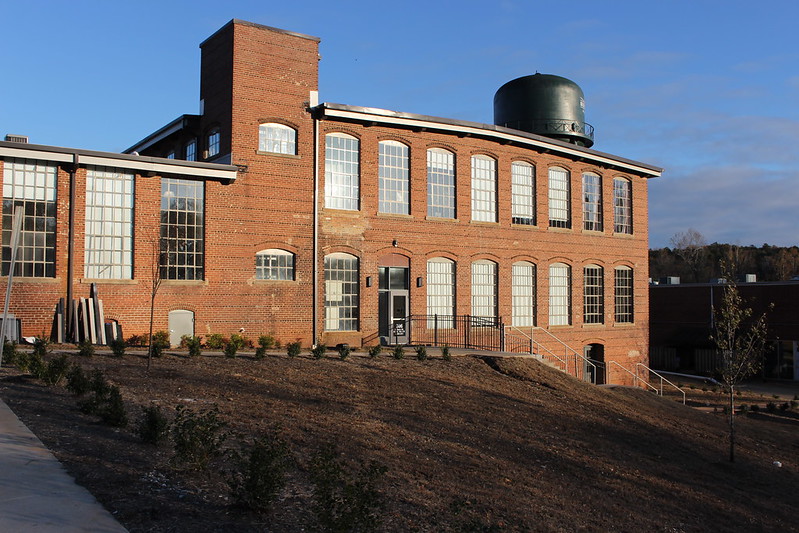
Hillsborough
Hillsborough, North Carolina, is a town rich in history and culture. Established in 1754, it played a significant role in the early political and cultural activities of the state.
The town, located on the site of three successive Native American villages, is known for its more than 100 historic homes, churches, and buildings from the late 18th and 19th centuries. The Hillsborough Visitors Center, once a headquarters for Confederate General Joseph E. Johnston, is a must-visit.
Today, Hillsborough is a blend of the past and present, offering a vibrant arts scene and various events. The town is known for its “Last Fridays” celebrations, Revolutionary War reenactments, and the annual Hog Day. Outdoor enthusiasts can explore the Occoneechee Mountain State Natural Area and Riverwalk. The town’s central location in North Carolina provides easy access to larger cities like Durham, Raleigh, and Chapel Hill while maintaining a peaceful, community-focused lifestyle.
Sylva
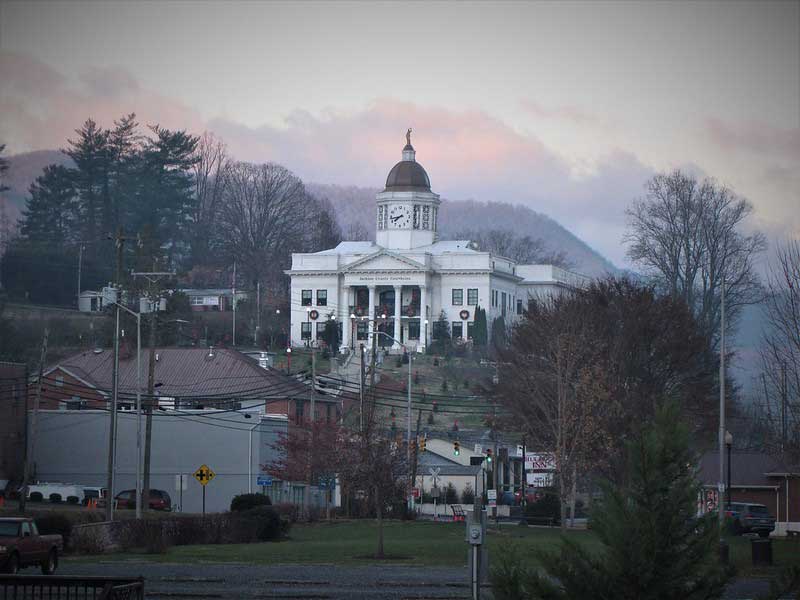
Sylva Appalachian mountains
Nestled in the Appalachian Mountains, Sylva is a small, picturesque town in western North Carolina with a population of just over 2,500. Sylva’s history of development dates back to the construction of the Western North Carolina Railroad in the 1880s.
As the county seat of Jackson County, Sylva is a hub of cultural and recreational resources. Its charming downtown area is a testament to its rich heritage, featuring a variety of unique shops, restaurants, and galleries that showcase local art and craftsmanship.
Outdoor enthusiasts will find Sylva particularly appealing. The town is surrounded by stunning natural beauty, offering access to challenging hiking trails in Pinnacle Park, the Western North Carolina Fly Fishing Trail, and Scotts Creek for trout fishing.
The town is celebrated for its community spirit, reflected in annual festivals and events. The town’s Main Street comes alive with these celebrations, creating a lively and engaging atmosphere for both residents and visitors.
Banner Elk
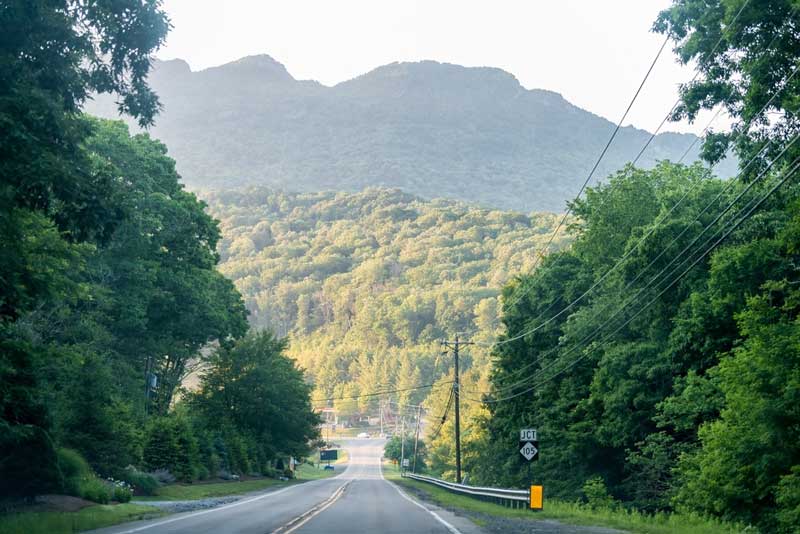
Banner Elk
Banner Elk, located in Avery County, North Carolina, is a town rich in history and natural beauty. Surrounded by the majestic Blue Ridge Mountains, Banner Elk boasts a climate akin to a mountain lake town, characterized by cold, snowy winters and mild summers.
This climate makes it a popular destination for outdoor activities year-round. Banner Elk’s picturesque landscape is dotted with several stunning waterfalls like Linville Falls, Elk River Falls, and Crabtree Falls, each offering unique hiking experiences and breathtaking views.
In winter, Banner Elk transforms into a snow sports haven, located between Beech Mountain and Sugar Mountain ski resorts. The town also has a rich heritage, with the Banner House Museum showcasing its early history.
Banner Elk’s dedication to preserving its historic resources and promoting heritage tourism adds to its charm as a quaint mountain community.
Highlands
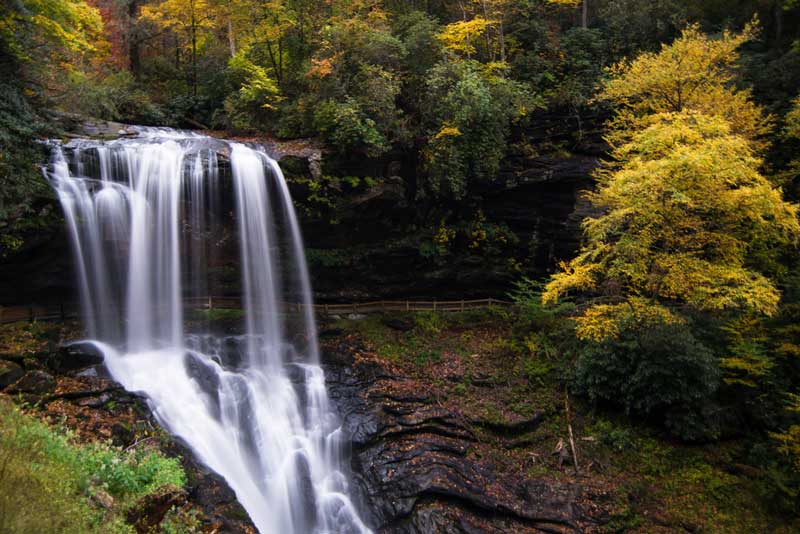
Highlands, North Carolina
Highlands, North Carolina, is a picturesque town that sits high in the Southern Appalachian Mountains. Founded in 1875 by Samuel Kelsey and Clinton C. Hutchinson, it was envisioned as a health and summer resort, sitting at an elevation of over 4,000 feet.
Highlands quickly became a cultural hub, attracting artists, musicians, authors, and scientists who were drawn to its natural beauty and unique cosmopolitan atmosphere. This charming town is characterized by its magnificent natural surroundings and a blend of different cultural influences.
Today, Highlands is known for its diverse activities and attractions. Outdoor enthusiasts can explore the numerous stunning waterfalls, including the famous Secret Falls, or hike to scenic vistas like Osage Overlook and Scaly Mountain.
For those interested in golf, the historic Highlands Country Club offers a beautiful course with deep roots in the community. Art lovers can appreciate local and regional works at the Carolina Gallery of Fine Art. And for a leisurely afternoon, the Cliffside Lake Recreation Area provides a perfect setting for relaxation amidst nature.
Mount Airy
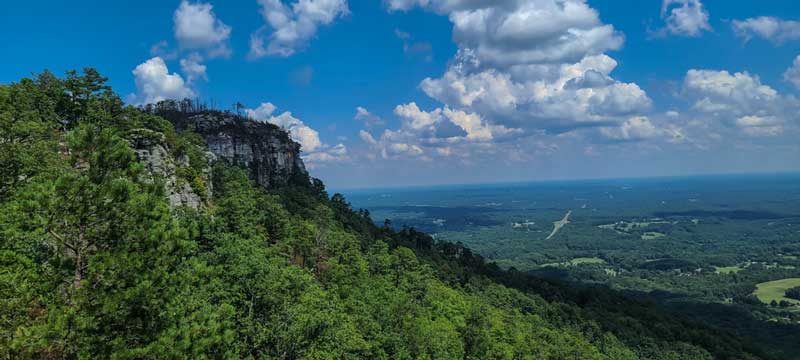
Mount Airy, North Carolina
Mount Airy, North Carolina, is a delightful small town renowned for its association with the beloved TV show “The Andy Griffith Show.” This picturesque town lies along the Ararat River, just south of the Virginia state line, and is nestled in the foothills of the Blue Ridge Mountains.
Mount Airy enjoys a humid subtropical climate, characterized by mild winters and warm summers, making it an inviting destination year-round.
The town is affectionately known as the inspiration for Mayberry, the fictional town in “The Andy Griffith Show.” Fans of the show can immerse themselves in nostalgia at attractions like Walker’s Soda Fountain and Floyd’s Barber Shoppe, both reminiscent of the TV series.
The Andy Griffith Museum, a treasure trove of show memorabilia, highlights Mount Airy’s pride in its famous son. Outdoor lovers will appreciate the proximity to Hanging Rock State Park, offering a range of trails amidst stunning natural beauty.
Pittsboro

Pittsboro, North Carolina
Pittsboro, North Carolina, is a quaint town with a population of around 4,433, offering a blend of small-town charm and modern amenities. It serves as the county seat of Chatham County and is located in the Durham-Chapel Hill Metro Area.
Pittsboro has a strong sense of community, with its residents coming from diverse backgrounds and cultures. The town is known for its attractive residential areas, college-town amenities, and a strong economy.
It boasts an average median income of $49,745 and a median home price of $473,900. The town experiences a warm climate with hot, humid summers, and the cost of living is relatively high compared to the national average.
Pittsboro is also noted for its safety, with lower crime rates compared to the national average. Educational facilities in the town include Pittsboro Elementary School, Horton Middle School, Margaret B. Pollard Middle School, Northwood High School, and a campus of the Central Carolina Community College.
Final Thoughts
Exploring these unique destinations reveals a rich tapestry of American small-town life, each with its own distinct charm and character. From their deep historical roots to modern-day attractions, these towns offer a blend of cultural heritage, natural beauty, and community spirit.
Whether it’s through their connections to iconic television shows, scenic natural landscapes, or historic significance, each place provides a unique window into different facets of local culture and history.
The blend of outdoor activities, cultural events, and community-oriented lifestyles makes these locations not just travel destinations, but also vibrant communities where history and modernity coexist harmoniously.
